News
Can smd LED lights be used in outdoor settings
As a leading LED manufacturer, our main products include THT numeric display, SMD numeric display, dot matrix, bar graph, light-emitting diodes (LEDs), SMD, Flux, high-power LEDs, and modules. These products are widely used in various applications such as home appliances, mobile phones, road traffic, urban lighting, energy-saving lighting, and many others. One of our key strengths is our state-of-the-art facility, which boasts a 12000㎡ dust-free and antistatic standard workshop. This ensures that our manufacturing process is of the highest quality, resulting in superior products that meet the highest industry standards.
We are proud to inform you that we have successfully obtained the national high tech enterprise certification, indicating our commitment to technological innovation and development. Additionally, we have acquired the ISO9001:2015 and IATF16,949:2016 vehicle specification quality management system certifications, showcasing our dedication to maintaining high standards of quality in our products. Furthermore, many of our products have received the EU CE certification, ensuring their compliance with European safety standards. We have also obtained the US UL certification, demonstrating our adherence to stringent safety requirements in the United States. In addition to these certifications, our UV sterilization technology has passed the photobiological safety test requirements specified by EN62471, guaranteeing its effectiveness and safety. We have also met the European and American LM-80life test requirements, further proving the reliability and durability of our products. Moreover, we are proud to mention that our products fully comply with the current international RoHS and REACH regulations, ensuring environmental friendliness and reducing potential health hazards.
An Ultimate FAQ Guide:
2.What makes smd LED lights better than traditional bulbs?
3.How long do smd LED lights last compared to other lighting options?
4.Can smd LED lights be used in outdoor settings?
5.Do smd LED lights emit UV rays or contain mercury?
6.Are there different color options for smd LED lights?
7.What is the lifespan of smd LED lights in industrial settings?
8.Are smd LED lights safe for use around children and pets?
9.Can smd LED lights be dimmed?
10.Do smd LED lights emit heat?
11.Are smd LED lights suitable for use in enclosed fixtures?
12.How do smd LED lights impact energy costs?
1.Are smd LED lights energy efficient?
Yes, SMD LED lights are energy efficient. SMD LED lights use significantly less energy than traditional lighting sources, such as incandescent and halogen bulbs. This is because SMD LED lights are more efficient at converting electricity into light, meaning they require less energy to produce the same amount of light. Additionally, SMD LED lights have a much longer lifespan than traditional lighting sources, meaning they will need to be replaced less often, further reducing energy consumption. SMD LED lights also produce less heat than traditional lighting sources, meaning they require less energy to cool the environment. This is because SMD LED lights produce light through the movement of electrons, rather than through the heating of a filament, as is the case with traditional lighting sources. This means that SMD LED lights are more efficient at converting electricity into light, and less energy is wasted in the form of heat. Overall, SMD LED lights are a much more energy efficient option than traditional lighting sources. They require less energy to produce the same amount of light, and they produce less heat, meaning they require less energy to cool the environment. Additionally, they have a much longer lifespan than traditional lighting sources, meaning they will need to be replaced less often, further reducing energy consumption.
2.What makes smd LED lights better than traditional bulbs?
SMD LED lights are becoming increasingly popular due to their many advantages over traditional bulbs. The most notable benefit of SMD LED lights is their energy efficiency. SMD LED lights use significantly less energy than traditional bulbs, making them a more cost-effective option. Additionally, SMD LED lights have a much longer lifespan than traditional bulbs, lasting up to 50,000 hours compared to the 1,000 hours of a traditional bulb. This means that SMD LED lights require less frequent replacement, saving time and money. SMD LED lights also produce a much brighter light than traditional bulbs, making them ideal for areas that require a lot of light. Additionally, SMD LED lights are much more durable than traditional bulbs, as they are not as easily damaged by vibrations or shocks. This makes them ideal for use in areas that are prone to vibrations, such as in vehicles or on construction sites. Finally, SMD LED lights are much more environmentally friendly than traditional bulbs. They do not contain any hazardous materials, such as mercury, and they do not produce any UV radiation. This makes them a much safer option for both people and the environment. Overall, SMD LED lights offer many advantages over traditional bulbs, making them a great choice for any lighting application. They are more energy efficient, have a longer lifespan, produce a brighter light, are more durable, and are much more environmentally friendly.
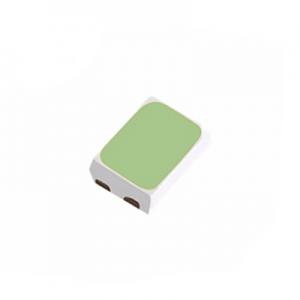
3.How long do smd LED lights last compared to other lighting options?
SMD LED lights are known for their long lifespan compared to other lighting options. On average, SMD LED lights can last up to 50,000 hours, which is much longer than traditional incandescent bulbs, which typically last around 1,000 hours. This means that SMD LED lights can last up to 50 times longer than traditional bulbs. Additionally, SMD LED lights are much more energy efficient than traditional bulbs, using up to 90% less energy. This means that not only do SMD LED lights last longer, but they also save you money in the long run. When compared to other lighting options, such as fluorescent and halogen bulbs, SMD LED lights still come out on top. Fluorescent bulbs typically last around 10,000 hours, while halogen bulbs last around 2,000 hours. This means that SMD LED lights last up to 25 times longer than fluorescent bulbs and 25 times longer than halogen bulbs. Overall, SMD LED lights are a great option for those looking for a long-lasting and energy-efficient lighting solution. With their long lifespan and energy efficiency, SMD LED lights are a great choice for any home or business.
4.Can smd LED lights be used in outdoor settings?
Yes, SMD LED lights can be used in outdoor settings. SMD LED lights are a type of light-emitting diode (LED) that is made up of a small surface-mounted package of semiconductor material. These lights are becoming increasingly popular for outdoor lighting due to their energy efficiency, long life, and low maintenance requirements. SMD LED lights are ideal for outdoor settings because they are highly durable and resistant to weathering. They are also able to withstand extreme temperatures, making them suitable for use in a variety of climates. Additionally, SMD LED lights are available in a wide range of colors and brightness levels, allowing for a variety of lighting effects. SMD LED lights are also very energy efficient, consuming up to 90% less energy than traditional lighting sources. This makes them an ideal choice for outdoor lighting, as they can help to reduce energy costs. Additionally, SMD LED lights have a long lifespan, with some models lasting up to 50,000 hours. This makes them a cost-effective choice for outdoor lighting, as they require less frequent replacement than traditional lighting sources. Overall, SMD LED lights are an excellent choice for outdoor lighting. They are highly durable, energy efficient, and long-lasting, making them a cost-effective and reliable option for outdoor lighting.
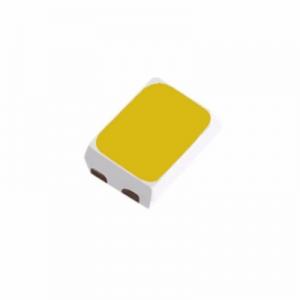
5.Do smd LED lights emit UV rays or contain mercury?
No, SMD LED lights do not emit UV rays or contain mercury. SMD LED lights are a type of light-emitting diode (LED) that uses surface-mount technology (SMT) to mount the LED onto a printed circuit board (PCB). SMD LED lights are much smaller than traditional LED lights, making them ideal for applications where space is limited. They are also more efficient than traditional LED lights, using less energy to produce the same amount of light. SMD LED lights do not contain mercury, unlike traditional fluorescent lights, which contain mercury vapor. Mercury is a toxic substance that can be harmful to humans and the environment. SMD LED lights also do not emit UV rays, which can be damaging to the skin and eyes. Instead, SMD LED lights emit light in the visible spectrum, which is safe for humans to view. In addition to being safer than traditional lighting, SMD LED lights are also more cost-effective. They require less energy to operate, which can help reduce energy costs. They also last longer than traditional lighting, which can help reduce replacement costs. Overall, SMD LED lights are a great alternative to traditional lighting. They are more efficient, cost-effective, and safer than traditional lighting, and they do not emit UV rays or contain mercury.
6.Are there different color options for smd LED lights?
Yes, there are different color options for SMD LED lights. The most common colors are red, green, blue, and white. However, there are also other colors available, such as yellow, orange, pink, and purple. The color of the LED light is determined by the type of semiconductor material used to create the light. For example, red LEDs are created using gallium arsenide phosphide, while blue LEDs are created using indium gallium nitride. The color of the LED light can also be changed by adjusting the voltage applied to the LED. This is known as color mixing, and it allows for a wide range of colors to be created. For example, by adjusting the voltage, you can create a range of colors from pink to purple. In addition to the standard colors, there are also specialty colors available, such as ultraviolet and infrared. These colors are used in applications such as security lighting and medical imaging. Overall, there are a wide variety of color options available for SMD LED lights. The most common colors are red, green, blue, and white, but there are also specialty colors available. By adjusting the voltage, you can also create a range of colors from pink to purple.
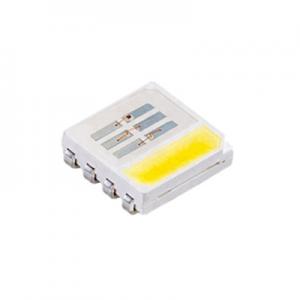
7.What is the lifespan of smd LED lights in industrial settings?
The lifespan of SMD LED lights in industrial settings can vary greatly depending on the type of LED light, the environment, and the quality of the product. Generally, SMD LED lights have a lifespan of up to 50,000 hours, which is much longer than traditional incandescent or halogen bulbs. This means that SMD LED lights can last up to five years or more in industrial settings. The environment in which the SMD LED lights are used can also affect their lifespan. If the lights are exposed to extreme temperatures, dust, or moisture, they may not last as long as they would in a more controlled environment. Additionally, the quality of the product can also affect the lifespan of the lights. Poorly made SMD LED lights may not last as long as those that are made with higher quality materials. In order to maximize the lifespan of SMD LED lights in industrial settings, it is important to use high quality products and to ensure that the environment is suitable for the lights. Additionally, regular maintenance and cleaning can help to extend the life of the lights. With proper care and maintenance, SMD LED lights can provide reliable lighting for many years in industrial settings.
8.Are smd LED lights safe for use around children and pets?
Yes, SMD LED lights are safe for use around children and pets. LED lights are much cooler than traditional incandescent bulbs, so they are not a fire hazard. They also do not emit any UV radiation, so they are not a health hazard. Additionally, LED lights are very energy efficient, so they do not generate a lot of heat, which can be dangerous for children and pets. LED lights are also very durable and long-lasting, so they are unlikely to break or shatter, which can be a hazard for children and pets. LED lights also do not contain any hazardous materials, such as mercury, which can be dangerous if ingested. Overall, LED lights are a safe and energy-efficient option for use around children and pets. They are much cooler than traditional bulbs, do not emit any UV radiation, and do not contain any hazardous materials. Additionally, LED lights are very durable and long-lasting, so they are unlikely to break or shatter.
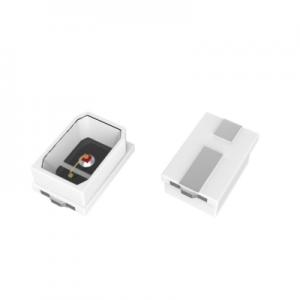
9.Can smd LED lights be dimmed?
Yes, SMD LED lights can be dimmed. Dimming is a great way to control the brightness of LED lights and create the perfect atmosphere for any room. Dimming LED lights can be done in a variety of ways, including using a dimmer switch, a remote control, or a timer. When dimming LED lights, it is important to use a dimmer switch that is specifically designed for LED lights. This is because LED lights require a different type of dimming than traditional incandescent bulbs. If the wrong type of dimmer switch is used, it can cause the LED lights to flicker or not dim properly. When using a remote control or timer to dim LED lights, it is important to make sure that the device is compatible with the LED lights. Some LED lights are not compatible with certain types of remotes or timers, so it is important to check the manufacturer’s instructions before attempting to dim the lights. Dimming LED lights can be a great way to create the perfect atmosphere in any room. It is important to make sure that the correct dimmer switch is used and that the remote control or timer is compatible with the LED lights. With the right setup, dimming LED lights can be a great way to control the brightness of the lights and create the perfect atmosphere.
10.Do smd LED lights emit heat?
Yes, SMD LED lights do emit heat. This is because they are powered by electricity, and when electricity passes through a conductor, it produces heat. The amount of heat produced by an SMD LED light depends on the wattage of the light, the size of the light, and the environment in which it is used. SMD LED lights are designed to be more efficient than traditional lighting sources, and they produce less heat than other types of lighting. However, they still produce some heat, and this heat can be a problem in certain applications. For example, if an SMD LED light is used in a confined space, the heat can build up and cause the temperature to rise. This can be dangerous, as it can cause the light to overheat and fail. In order to reduce the amount of heat produced by SMD LED lights, it is important to use the correct wattage for the application. It is also important to ensure that the light is installed in a well-ventilated area, as this will help to dissipate the heat. Additionally, it is important to use a heat sink or other cooling device to help dissipate the heat produced by the light. Overall, SMD LED lights do emit heat, but the amount of heat produced is much less than other types of lighting. By using the correct wattage and ensuring that the light is installed in a well-ventilated area, the amount of heat produced can be minimized.
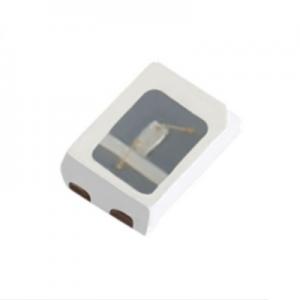
11.Are smd LED lights suitable for use in enclosed fixtures?
Yes, SMD LED lights are suitable for use in enclosed fixtures. SMD LED lights are designed to be used in enclosed fixtures because they are more efficient and produce less heat than traditional incandescent bulbs. SMD LED lights are also more durable and can last up to 50,000 hours, which is much longer than traditional bulbs. Additionally, SMD LED lights are more energy efficient and can save up to 80% of energy compared to traditional bulbs. When using SMD LED lights in enclosed fixtures, it is important to ensure that the fixture is properly ventilated to prevent the build-up of heat. Additionally, the fixture should be designed to allow for adequate air circulation to ensure that the LED lights do not overheat. It is also important to ensure that the LED lights are not exposed to direct sunlight or other sources of heat, as this can cause the lights to overheat and fail prematurely. Overall, SMD LED lights are suitable for use in enclosed fixtures. They are more efficient, durable, and energy-saving than traditional bulbs, and can last up to 50,000 hours. However, it is important to ensure that the fixture is properly ventilated and designed to allow for adequate air circulation to prevent the build-up of heat.
12.How do smd LED lights impact energy costs?
SMD LED lights are a great way to reduce energy costs. They are much more efficient than traditional incandescent bulbs, using up to 90% less energy. This means that you can save money on your energy bills by switching to LED lighting. Additionally, LED lights last much longer than traditional bulbs, so you won’t have to replace them as often. This also helps to reduce energy costs, as you won’t have to buy new bulbs as often. LED lights also produce less heat than traditional bulbs, which can help to reduce cooling costs in the summer. This is because LED lights don’t produce as much heat, so your air conditioning won’t have to work as hard to keep your home cool. Overall, SMD LED lights are a great way to reduce energy costs. They are much more efficient than traditional bulbs, and they last much longer. Additionally, they produce less heat, which can help to reduce cooling costs in the summer. Switching to LED lighting is a great way to save money on your energy bills.
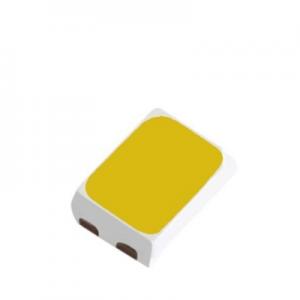
RELATED NEWS
- Can this type of SMD LED product become a new outlet?
- The latest display module product exhibition is about to start, don't you know y
- The most powerful display module supplier
- How does the 7 segment LED display module handle displaying negative numbers?
- Embrace the original intention and innovation of new SMD LED products with uncer
CATEGORIES
LATEST NEWS
CONTACT US
Name: Ms.Wendy
Mobile:0086-15861679389
Tel:0086-81725657
Whatsapp:0086 17386542651
Email:info@arktechcn.com
Add:8# HengDa CaiFu Center, JinKai Industrial Area, Wuci City, Jiang Su, China
